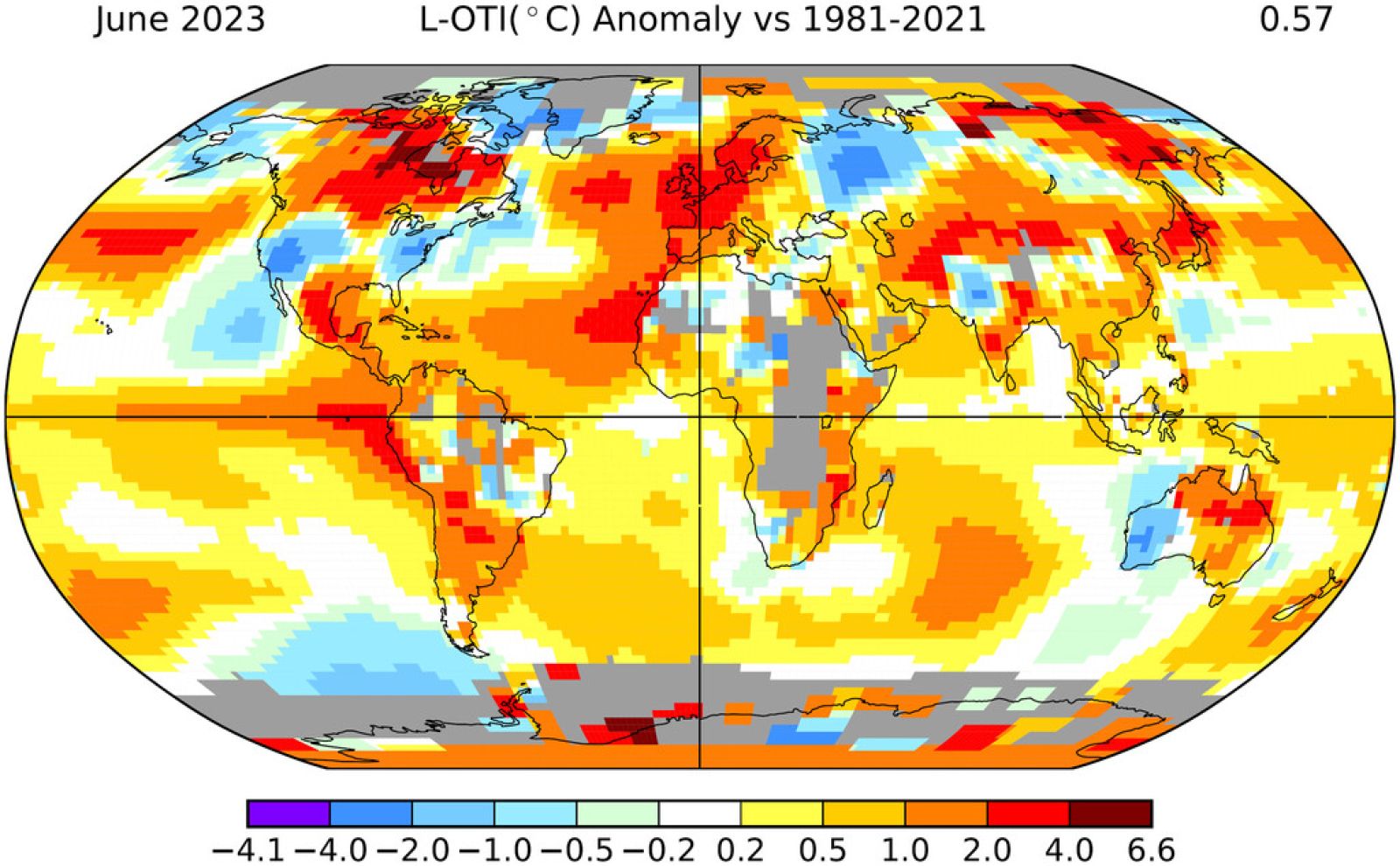The Atlantic Ocean on a path to a +3°C global warming trajectory
Published by Redbran,
Source: Bulletin of the American Meteorological Society
Other Languages: FR, DE, ES, PT
Source: Bulletin of the American Meteorological Society
Other Languages: FR, DE, ES, PT
Follow us on Google News (click on ☆)
Led by Dr. Till Kuhlbrodt from the University of Reading, a study published in the Bulletin of the American Meteorological Society highlights this alarming trend, revealing how such extreme temperatures could become the norm in a world 3°C (5.4°F) warmer than the pre-industrial era.

The beginning of 2023 was marked by an unprecedented phenomenon: the North Atlantic registered exceptionally high temperatures, unseen in the last forty years. In August, the temperature in this region was 1.4°C (2.5°F) above the average for the years 1982 to 2011. This observation is not trivial; it aligns with the predictions of climatic models for a future where global warming would reach 3°C (5.4°F).
This climatic imbalance is primarily caused by an accumulation of solar energy on Earth, a result of human-induced greenhouse gas emissions. Currently, our planet absorbs more energy than it returns to space, which greatly contributes to ocean warming. Indeed, over 90% of the excess energy is absorbed by the oceans, playing a key role in their warming.
The Atlantic has been warming faster than any other major ocean basins since 2016. This trend could be linked to the record decrease in sea ice around Antarctica. Indeed, the sea ice extent in Antarctica in winter 2023 reached its lowest level since the start of satellite measurements in the late 1970s.

Land-Ocean Temperature Index (L-OTI) by NASA for June 2023 (GISTEMP Team 2023). L-OTI charts display SAT anomalies over land and marine ice and SST anomalies over water (ice-free).
Credit: Bulletin of the American Meteorological Society 105, 3; 10.1175/BAMS-D-23-0209.1
Understanding the influence of the Atlantic's warming on the reduction of sea ice is crucial. A better attribution of these extreme phenomena will allow to refine the predictions of climatic models and to inform mitigation and resilience policies in the face of climate change.
According to Dr. Kuhlbrodt, it is urgent to collect more data in the Atlantic to establish a definitive link between warming, the disappearance of ice, and changes in ocean currents. This could reveal unsuspected climatic connections between the poles, helping us to better understand and anticipate the consequences of global warming.